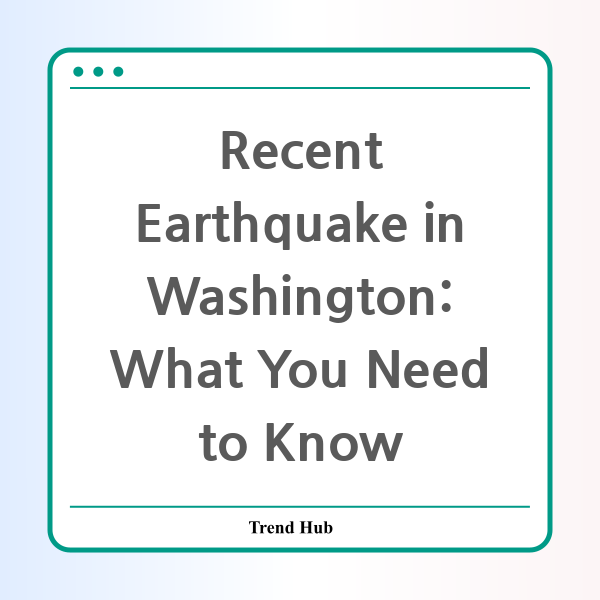* This website participates in the Amazon Affiliate Program and earns from qualifying purchases.

Did you feel the earth shake beneath your feet? On February 21, 2025, a 4.7-magnitude earthquake rocked the southwest coast of British Columbia, sending tremors as far south as parts of Washington State. Despite the initial alarm, there was no major damage, and the earthquake, classified as minor, serves as a timely reminder of the seismic risks our region faces.
Located near the seaside community of Sechelt, this quake struck just before 1:30 PM PT, with the tremors felt widely across British Columbia, from Vancouver Island to Metro Vancouver and even reaching the Okanagan region. Reports indicated that many residents experienced this as one of the most significant earthquakes in recent memory, causing them to jump under desks or evacuate buildings.
Jacqueline Graham, a resident of Courtenay on Vancouver Island, described her experience as hearing a loud boom before feeling the shaking. "I thought a tree had fallen on the house," she recalled. Although some minor damage was reported, like cracked drywall and burst pipes, fortunately, no injuries or major structural issues were documented.
The earthquake was initially recorded at a higher magnitude but was later revised down to 4.7 by Earthquakes Canada. The US Geological Survey measured it at 4.8. Such discrepancies are common as seismologists finalize their assessments from various sensors in both Canada and the US. Interestingly, a minor aftershock of 1.9 occurred shortly after the main quake, indicating that the region is still experiencing seismic activity.
In the aftermath, B.C. Ferries temporarily evacuated and inspected their Horseshoe Bay terminal, ensuring the safety of passengers and staff. Although their operations were briefly disrupted, they reassured the public that safety remains their top priority.
The Canadian Earthquake Early Warning (EEW) system was activated during this event, alerting residents moments before the shaking reached them. However, some individuals reported not receiving alerts, which brought forth discussions about the efficiency of the system. Officials are investigating these reports to enhance preparedness for future events.
With a “felt earthquake” occurring in this region roughly every ten years, experts stress the importance of being prepared for larger seismic events. Associate Professor Sheri Molnar from Western University emphasizes that while residents may not be ready for a major earthquake, it is crucial to have safety plans in place. Local government agencies, including Emergency Info B.C., have reiterated the need for residents to stay informed and prepared.
The experience of the recent earthquake can serve as a wake-up call for Washington residents, too, as the Pacific Northwest is known for its seismic activity. While the threat of major quakes looms, the key takeaway is preparedness. Engaging in community safety drills, having emergency kits ready, and discussing plans with family members can make a significant difference when an earthquake strikes.
As we reflect on this event, don't forget to share your earthquake experience. Reporting your observations to relevant authorities not only aids in understanding seismic activity but also contributes to future safety improvements. Whether it's a rumble or a full-blown quake, every bit of information helps researchers shape better warning systems and preparedness programs for everyone.
In conclusion, while the recent 4.7-magnitude earthquake was minor, it highlights the reality of living in a seismically active area like Washington and British Columbia. Staying informed and prepared is crucial, and communities must work together to ensure safety in the face of natural disasters.
* This website participates in the Amazon Affiliate Program and earns from qualifying purchases.